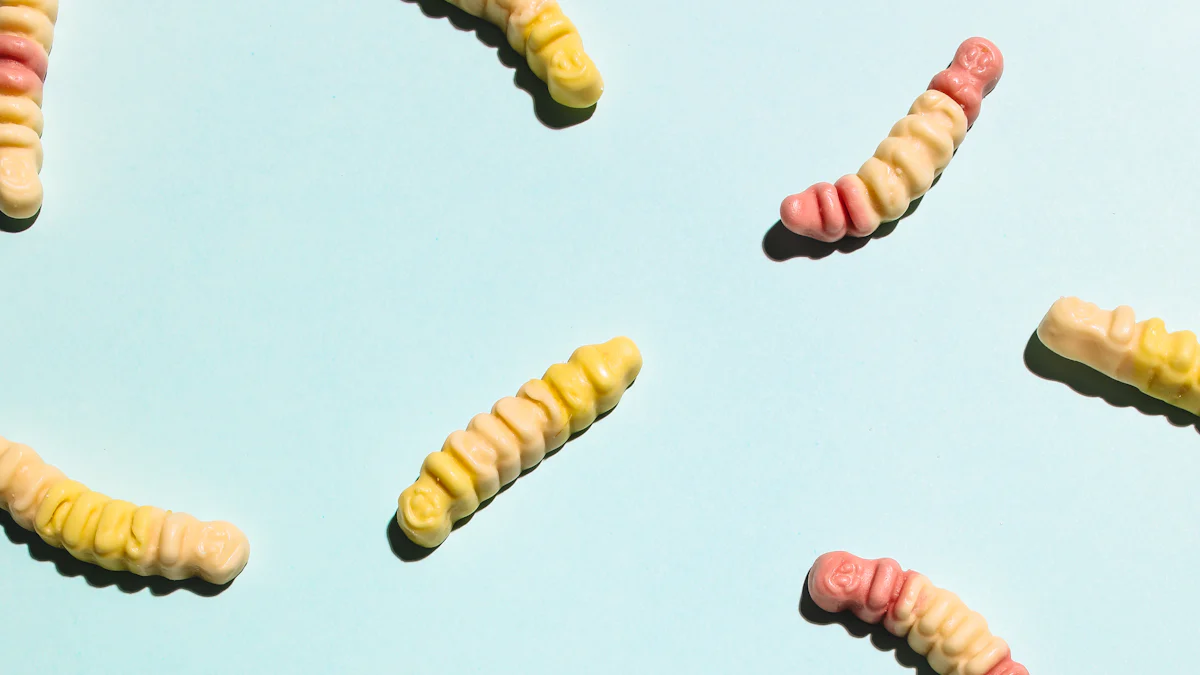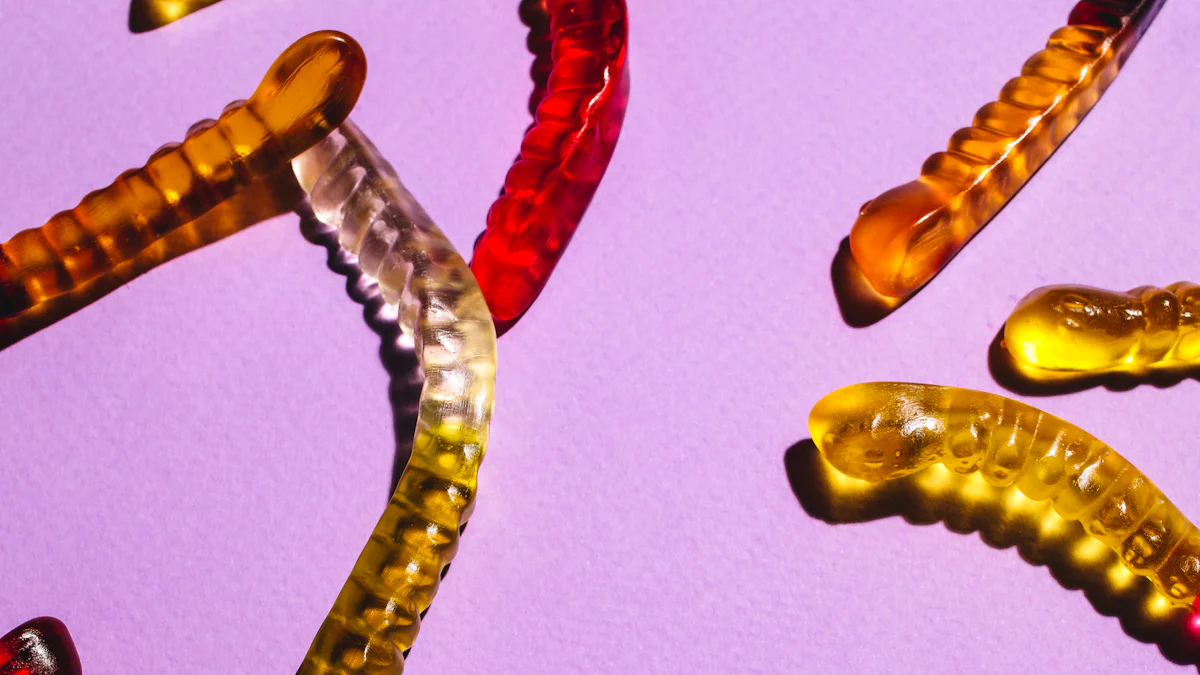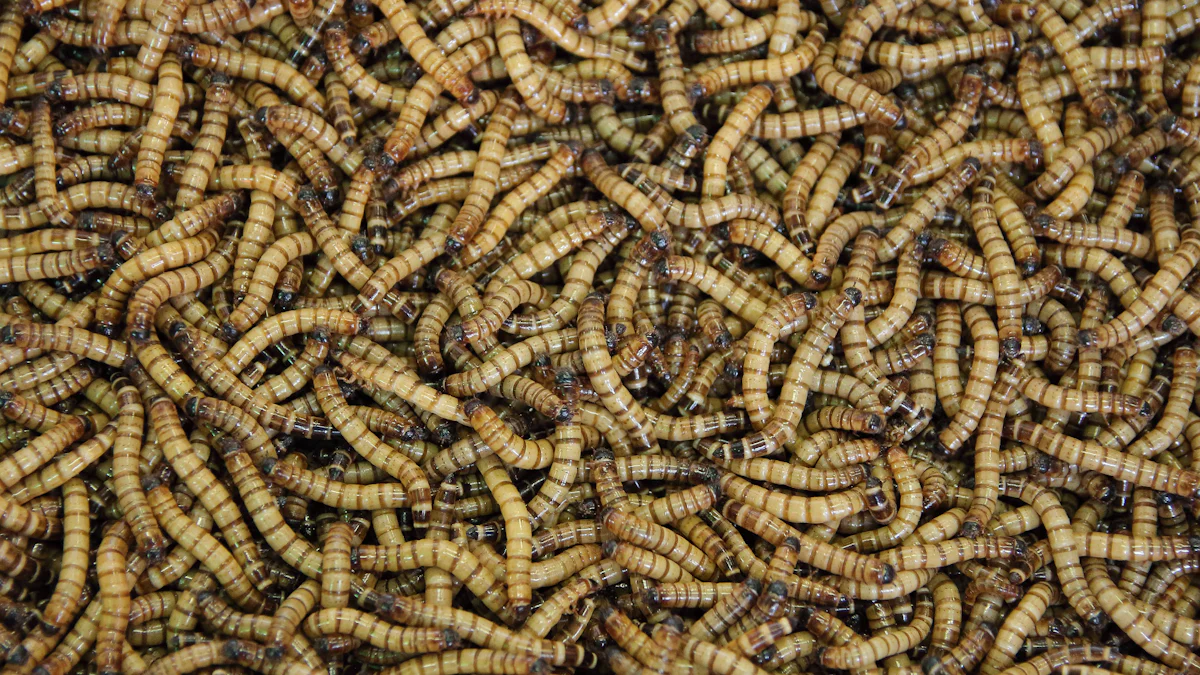
Imagine having a stash of chewy meal worms ready to go whenever you need them. These little critters can be stored for several months if you treat them right. You must store them under optimal conditions to keep them fresh and chewy. Think of it like storing your favorite snacks; you wouldn’t want your chewy meal worms to go stale, right? Keep them cool and dry, and they’ll stay in top shape. Proper storage not only maintains the quality of your chewy meal worms but also prevents spoilage. So, get ready to learn how to keep your chewy meal worms in perfect condition for as long as possible!
Key Takeaways
- Store chewy mealworms at a cool temperature between 40°F and 50°F to extend their shelf life.
- Maintain humidity levels around 50% or less to prevent spoilage and mold growth.
- Use airtight containers to protect mealworms from air and moisture, ensuring they stay fresh and chewy.
- Regularly check for signs of moisture or pests in your storage area to maintain quality.
- Avoid using paper or cardboard containers, as they can absorb moisture and allow air in.
- Consider using silica gel packets to control moisture levels inside the storage container.
- Label your containers with storage dates to keep track of freshness and ensure optimal use.
Optimal Storage Conditions for Chewy Mealworms

Storing your chewy mealworms properly is like giving them a cozy home. You want them to stay fresh and ready for action. Let’s dive into the best ways to keep them in tip-top shape!
Temperature
Ideal temperature range for storage.
You should aim to store your chewy mealworms at a cool temperature. Think of it like keeping your favorite chocolate from melting. The ideal range is between 40°F and 50°F. This temperature keeps them dormant and extends their shelf life.
Effects of temperature fluctuations.
Temperature changes can be tricky. If it gets too warm, your mealworms might wake up and start moving around. Too cold, and they could freeze. Both scenarios can affect their quality. So, keep them steady and avoid those wild temperature swings.
Humidity
Recommended humidity levels.
Humidity is another key player in the storage game. You want to keep it low, around 50% or less. This level prevents moisture from creeping in and spoiling your chewy mealworms.
Impact of high humidity on mealworms.
High humidity is like a villain in the story of mealworm storage. It can lead to mold and spoilage. If you notice any water droplets or condensation in the packaging, it’s a sign that things are getting too damp. Keep an eye out for these signs to ensure your mealworms stay safe.
Container Type
Benefits of using airtight containers.
Airtight containers are your best friends when storing chewy mealworms. They lock out air and moisture, keeping your mealworms fresh and chewy. Plus, they prevent any unwanted guests, like pests, from sneaking in.
Materials to avoid for storage.
Not all containers are created equal. Avoid using paper or cardboard boxes. These materials can absorb moisture and let air in. Stick to plastic or glass containers with tight-fitting lids for the best results.
Factors Affecting Longevity of Chewy Mealworms
When it comes to keeping your chewy mealworms fresh and tasty, several factors can play a role. Let’s explore what can affect their longevity and how you can keep them in prime condition.
Exposure to Air
Air is like the sneaky villain in the story of mealworm storage. It can reduce the shelf life of your chewy mealworms faster than you might think.
How air exposure reduces shelf life.
When mealworms are exposed to air, they start to lose their moisture. This drying process can make them less chewy and more brittle. Air exposure also invites unwanted guests like bacteria and mold, which can spoil your mealworms. You want to keep them as fresh as possible, so minimizing air exposure is key.
Tips to minimize air exposure.
To keep air at bay, use airtight containers. These containers create a barrier that locks out air and keeps your mealworms fresh. Make sure the lid is sealed tightly after each use. If you have a vacuum sealer, even better! It can remove excess air and provide an extra layer of protection.
Moisture Levels
Moisture is another factor that can impact the longevity of your chewy mealworms. Too much moisture can lead to spoilage, while too little can dry them out.
Consequences of excess moisture.
Excess moisture is like a ticking time bomb for your mealworms. It can cause them to become soggy and lose their chewiness. Moist environments also encourage mold growth, which can ruin your entire stash. If you notice any water droplets or condensation inside the container, it’s a sign that things are getting too damp.
Methods to control moisture.
To control moisture levels, store your mealworms in a cool, dry place. Use silica gel packets or moisture absorbers inside the container to keep humidity in check. These little helpers can absorb excess moisture and keep your mealworms in perfect condition. Regularly check the container for any signs of moisture and replace the absorbers as needed.
By understanding these factors and taking the right steps, you can ensure your chewy mealworms stay fresh and ready for whenever you need them.
Practical Tips for Extending Shelf Life of Chewy Mealworms

Keeping your chewy mealworms fresh and ready for use requires some clever storage strategies. Let’s explore some practical tips to extend their shelf life and ensure they remain in top condition.
Use of Airtight Containers
Airtight containers are essential for preserving the freshness of your mealworms. They act as a fortress, protecting your mealworms from air and moisture.
Types of airtight containers recommended.
When choosing a container, consider the number of mealworms you plan to store. Airtight Containers for Mealworm Storage are ideal. Look for containers with smooth walls to prevent climbing and escaping. Opt for shallow containers with a wide mouth to allow heat dissipation. Transparent containers are a bonus, as they let you monitor the mealworms without opening the lid. Glass or plastic containers work best, providing a sturdy barrier against external elements.
Proper sealing techniques.
Proper sealing is crucial to keep your mealworms fresh. After placing them in the container, ensure the lid fits snugly. Press down firmly to create an airtight seal. If you have a vacuum sealer, use it to remove excess air, adding an extra layer of protection. Label the container with the storage date and type of mealworms to keep track of freshness.
Storing in a Cool, Dry Place
Finding the right spot for your mealworms can make all the difference in their longevity. A cool, dry place is your best bet.
Identifying suitable storage locations.
Look for a location that maintains a consistent temperature and low humidity. A pantry or a basement might be ideal. Avoid areas near windows or heat sources, as these can cause temperature fluctuations. Keep the mealworms away from direct sunlight, which can increase the temperature inside the container.
Avoiding common storage mistakes.
Avoid storing mealworms in areas prone to moisture, like near sinks or in damp basements. Moisture can lead to spoilage and mold growth. Don’t place them in the refrigerator, as the cold can affect their texture and quality. Regularly check the storage area for any signs of moisture or pests, and adjust the location if necessary.
By following these practical tips, you can ensure your chewy mealworms remain fresh and ready for whenever you need them. Proper storage not only extends their shelf life but also maintains their quality, making them a reliable choice for your needs.
You’ve learned how to store your mealworms like a pro! Let’s recap the essentials:
- Temperature: Keep them cool to delay metamorphosis and extend their life.
- Humidity: Maintain low levels to prevent spoilage.
- Containers: Use airtight options to lock out air and moisture.
By following these guidelines, you ensure your mealworms stay fresh and ready for use. Proper storage not only extends their shelf life but also maintains their quality. So, treat your mealworms right, and they’ll be there when you need them!
FAQ
Why should you store mealworms?
Storing mealworms ensures a consistent supply for your livestock, pets, or other animals. You won’t have to worry about running out when your critters need a snack. Plus, proper storage keeps them fresh and ready for action!
How do I store mealworms?
You can store mealworms in the refrigerator for up to two weeks. This method prevents them from growing too large for your reptile or bird. After two weeks, take them out of the fridge and let them become active again. It’s like giving them a little vacation before they get back to work!
How can I extend the lifespan of mealworms?
To extend their lifespan, follow these storage guidelines: Mealworms are the larvae of darkling beetles. To keep them in this stage, store them at low temperatures to halt their metamorphosis. Refrigerate them at 45-50°F to put them in a dormant state. This way, they’ll be usable for feeding for 6-10 weeks. If left at room temperature, they’ll only last about 3 weeks before turning into pupae or dying. Remember to take them out of the fridge once a week for 24 hours to feed them, then pop them back in.
How do I know if mealworms have gone bad?
Keep an eye out for these signs:
- Discoloration: Fresh dried mealworms should have a uniform color. Black spots or discoloration might indicate mold or spoilage.
- Unusual Odor: Fresh mealworms have a mild, earthy smell. If they start to stink, it’s time to toss them.
- Moisture: Any moisture or condensation inside the packaging means they might not be safe to feed anymore.
What are the benefits of using airtight containers for mealworm storage?
Airtight containers act as a fortress, protecting your mealworms from air and moisture. They keep your mealworms fresh and chewy, and prevent pests from sneaking in. Plus, they help maintain the ideal environment for your mealworms to thrive.
Can I store mealworms in the freezer?
Freezing mealworms isn’t recommended. The extreme cold can affect their texture and quality. Stick to refrigeration for the best results.
How often should I check my mealworm storage?
Regularly check your mealworm storage for signs of moisture, pests, or spoilage. Doing this ensures your mealworms stay fresh and ready for use. If you notice any issues, address them promptly to maintain quality.
What should I do if I find moisture in the mealworm container?
If you spot moisture, remove it immediately. Use silica gel packets or moisture absorbers to keep humidity in check. These little helpers absorb excess moisture and keep your mealworms in perfect condition.
Can I store mealworms in a basement?
A basement can be a suitable storage location if it maintains a consistent temperature and low humidity. Avoid damp areas, as moisture can lead to spoilage and mold growth. Keep your mealworms away from direct sunlight and heat sources.
How do I prevent mealworms from escaping their container?
Choose containers with smooth walls to prevent climbing and escaping. Opt for shallow containers with a wide mouth to allow heat dissipation. Ensure the lid fits snugly to create an airtight seal. If you follow these tips, your mealworms will stay put!


